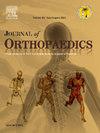谁会髋部骨折?十年创伤性髋部骨折数据
IF 1.5
Q3 ORTHOPEDICS
引用次数: 0
摘要
目的髋部骨折会导致严重的发病率、死亡率和医疗费用,尤其是在老年人群中。了解这些骨折的发生机制对于制定有针对性的预防策略和为患者提供咨询至关重要。方法利用美国国家电子伤害监测系统(NEISS)确定了 2013 年至 2022 年期间 25,068 例髋部骨折的队列。纳入标准要求将其归类为下躯干骨折,并在叙述中明确提及髋部骨折。使用 95% 置信区间和 Chi-Squared 独立性检验对患者的年龄、种族、性别、发病地点、发病时间和相关消费品进行了比较。女性更容易发生髋部骨折(P < .001),占所有骨折患者的 68.4% (95% CI 67.8%-69.0%)。患者最有可能在家中受伤(P < .001),占骨折总数的 62.0%(95% CI 61.4%-62.6%)。摔倒在地板上的骨折占 36.0%(95% CI 35.4%-36.6%),而与床、楼梯和椅子有关的骨折是其他常见的骨折原因,分别占 11.2%(95% CI 10.8%-11.6%)、7.9%(95% CI 7.5%-8.2%)和 5.4%(95% CI 5.1%-5.7%)。在 50-60 岁年龄组中,楼梯的风险最大,占骨折的 12.4%(95% CI 10.6%-14.5%)。年轻人发生骨折最常见的原因是高能量活动,如从梯子、自行车和楼梯上跌落(P < .001)。老年人从床上和椅子上摔倒、中年人从楼梯上摔倒以及年轻人从高处摔倒的风险更高,因此有必要采取有针对性的预防措施。医疗服务提供者应指导患者在家中采取降低风险的措施,而医疗保险和其他保险公司必须努力扩大这些措施的覆盖范围。本文章由计算机程序翻译,如有差异,请以英文原文为准。
Who breaks their hip? A decade of traumatic hip fracture data
Aims & objectives
Hip fractures lead to significant morbidity, mortality, and healthcare costs, particularly in elderly populations. Understanding the mechanisms underlying these fractures is crucial for developing targeted prevention strategies and counseling patients.
Methods
The National Electronic Injury Surveillance System (NEISS) was utilized to identify a cohort of 25,068 hip fractures from 2013 to 2022. The inclusion criteria mandated classification as a lower trunk fracture and explicit mention of hip fracture in the narrative. Patient age, race, sex, incident location, the time of year, and associated consumer products were compared using 95% confidence intervals and Chi-Squared tests of independence.
Results
A total of 25,068 hip fracture patients were included in this study. Females were more likely to fracture their hip (P < .001) representing 68.4% (95% CI 67.8%–69.0%) of all fractures. Patients were most likely to injure themselves at home (P < .001), accounting for 62.0 % (95% CI 61.4%–62.6%) of fractures. Falls to the floor represented 36.0 % (95% CI 35.4%–36.6%) of fractures, while fractures related to beds, stairs, and chairs emerged as other prevalent mechanisms at 11.2% (95% CI 10.8%–11.6%), 7.9% (95% CI 7.5%–8.2%), and 5.4% (95% CI 5.1%–5.7%), respectively. In the 50–60 age group, stairs present a prominent risk, representing 12.4% (95% CI 10.6%–14.5%) of fractures. Younger individuals suffered fractures most commonly due to high energy activities, such as falls from ladders, bicycles, and stairs (P < .001).
Conclusion
While falls remain the chief cause of hip fractures, many of these injuries stem from overlooked mechanisms. The heightened risk associated with falls from beds and chairs in the elderly, stair-related injuries in middle-aged individuals, and high-force modalities in younger people, highlights the necessity for tailored preventive measures. Providers should counsel their patients on risk reduction measures within the home, while Medicare and other insurers must work to expand coverage for these same measures.
求助全文
通过发布文献求助,成功后即可免费获取论文全文。
去求助
来源期刊

Journal of orthopaedics
ORTHOPEDICS-
CiteScore
3.50
自引率
6.70%
发文量
202
审稿时长
56 days
期刊介绍:
Journal of Orthopaedics aims to be a leading journal in orthopaedics and contribute towards the improvement of quality of orthopedic health care. The journal publishes original research work and review articles related to different aspects of orthopaedics including Arthroplasty, Arthroscopy, Sports Medicine, Trauma, Spine and Spinal deformities, Pediatric orthopaedics, limb reconstruction procedures, hand surgery, and orthopaedic oncology. It also publishes articles on continuing education, health-related information, case reports and letters to the editor. It is requested to note that the journal has an international readership and all submissions should be aimed at specifying something about the setting in which the work was conducted. Authors must also provide any specific reasons for the research and also provide an elaborate description of the results.
 求助内容:
求助内容: 应助结果提醒方式:
应助结果提醒方式:


